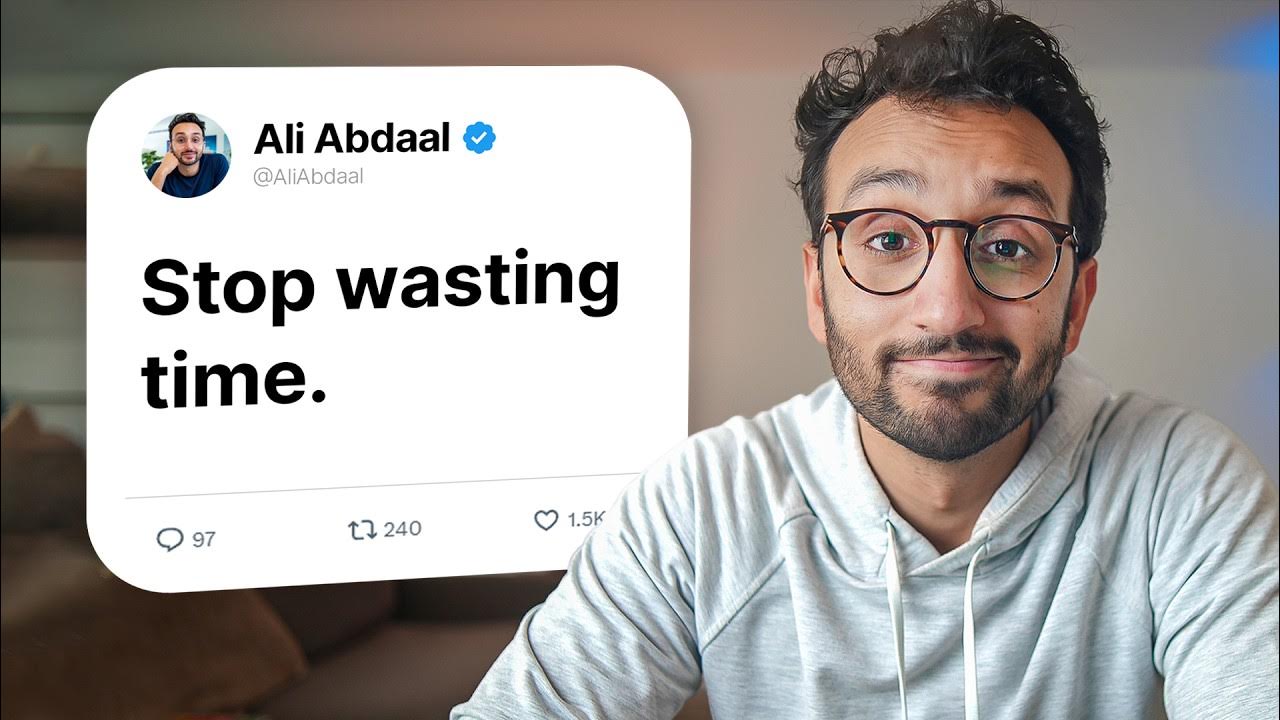How to Start Your First Business in 48 Hours
Summary
TLDR本视频讨论了Noah Kagan的书籍《百万美元周末》中如何快速启动业务的方法。书中分为三个部分:启动、构建和增长。Kagan强调,创业不必等到有了完美想法才开始,而是应该先决定开始,然后找到合适的想法。他提倡“先行动,后完善”的理念,并建议通过解决实际问题来构建业务,优先考虑客户需求。此外,他还分享了如何通过预售产品来验证市场需求,从而减少创业风险。
Takeaways
- 🚀 **开始创业不必等待完美想法**:创业不是先有好主意再开始,而是决定开始创业,然后找到合适的主意。
- 🛠️ **行动胜于空想**:成功的企业家都是先行动,再解决问题,而不是事先分析。
- 💡 **最小行动原则**:不要被“如何做”所困扰,而是考虑现在能采取的最小行动。
- 💌 **情感支持的重要性**:对于许多想要开始YouTube频道的人来说,情感障碍比技术问题更大。
- 💰 **投资与理财**:使用如Trading212这样的平台可以帮助你投资股票、股份和基金,且无需支付佣金。
- 🎯 **客户至上**:首先确定你想要服务的人群,因为业务本质上是解决愿意为此付费的人的问题。
- 🤔 **验证商业想法**:通过询问潜在客户,验证他们是否愿意为你的解决方案付费。
- 📈 **从自己的问题中发现商机**:如果你遇到问题,很可能会有人有同样的问题。
- 📝 **预售验证市场需求**:通过预售产品或服务来验证市场需求,而不是先制作再销售。
- 🗣️ **与客户沟通**:与客户进行大量沟通,了解他们的问题,并验证你的商业想法是否真的有市场。
- 📊 **持续学习与成长**:阅读《百万美元周末》这样的书籍,了解创业的深入策略和方法。
Q & A
《百万美元周末》这本书主要教我们什么?
-这本书主要教我们如何在一个周末开始自己的第一家公司,为有创业想法但尚未行动的人提供了一条清晰的行动路线图。
书中提到的“就f***ing开始”是什么意思?
-这句话的意思是鼓励人们在创业时不要等待完美的时机或完美的点子,而是要立刻开始行动,即使自己还没有完全准备好。
为什么说“现在,而不是怎么做”这个座右铭对创业者很重要?
-这个座右铭强调的是采取行动的重要性,而不是纠结于如何去做。它鼓励创业者专注于立即可以采取的最小行动,而不是被“怎么做”这个问题所困扰。
书中提到的“客户优先”的方法是什么?
-“客户优先”的方法是指创业者首先应该确定他们想要服务的人群,然后找出这些潜在客户的问题,而不是先有一个商业想法或产品。这样可以确保在开发产品或服务之前,已经验证了市场上确实有人愿意为解决这些问题付费。
如何验证一个商业想法是否有市场?
-验证商业想法的市场性可以通过直接向潜在客户提出问题,询问他们是否愿意为解决某个问题付费。如果他们愿意预付资金,那么这个想法就值得进一步探索。
为什么说在建立产品之前先销售产品是个好主意?
-在建立产品之前先销售产品可以验证市场对产品的需求,确保有实际的客户需求。这样可以减少风险,避免在不确定是否有市场的情况下投入大量时间和资源去开发产品。
Noah Kagan的朋友Boris是如何验证他的餐饮业务想法的?
-Boris通过发送电子邮件给他的朋友们,提出了一个预先支付20美元以换取方便且美味家常菜的业务想法,并询问他们是否对此感兴趣。这种直接向潜在客户收费的方法帮助他验证了这个想法的可行性。
如何使用自己的问题来生成商业想法?
-通过反思自己的日常生活中遇到的问题,比如那些让你感到烦恼的事情、长时间未完成的任务、经常做不好的事情,或者你想买但市场上没有的产品,这些都可能是潜在的商业机会。
为什么说与客户交谈是验证商业想法的关键?
-与客户交谈可以帮助创业者更好地理解客户的真实需求和问题,从而调整和优化他们的产品或服务。此外,通过向客户预销售产品或服务,可以验证市场的真实需求,并为产品开发提供资金支持。
在创业初期,为什么建议创业者专注于获取前三个付费客户?
-专注于获取前三个付费客户可以帮助创业者验证他们的商业想法是否具有市场潜力。一旦有了愿意付费的客户,这为创业者提供了继续发展业务的动力和信心。
如果我想要开始一个在线课程,我应该先做什么?
-你应该先进行预售,通过创建一个简单的着陆页,向你的受众介绍课程概念,并提供预购选项。这样,你可以在实际制作课程之前验证市场需求,并为课程的开发提供资金。
Outlines

此内容仅限付费用户访问。 请升级后访问。
立即升级Mindmap

此内容仅限付费用户访问。 请升级后访问。
立即升级Keywords

此内容仅限付费用户访问。 请升级后访问。
立即升级Highlights

此内容仅限付费用户访问。 请升级后访问。
立即升级Transcripts

此内容仅限付费用户访问。 请升级后访问。
立即升级浏览更多相关视频

How Much I Made In My First Year of Amazon KDP Publishing Mid-Content Puzzle Books (Income Report)

How To Start Shopify Dropshipping in 2024 (For Beginners)

"躺平"是实现财务自由的第一步

My honest advice to someone who wants financial freedom

Earn $15 Per Signup: Easy Passive Income Setup using AI SEO

Как ИИ-компании победили Google, Apple и Amazon | Искусственный интеллект: путь к завоеванию мира

Passive Income Jobs From Home That Earn $100,000 a Year
5.0 / 5 (0 votes)